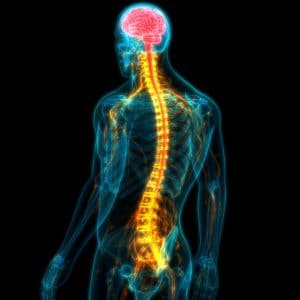Spinal Cord Injuries and Hypotension
 Spinal cord injuries can happen for a variety of reasons. Common causes include motor vehicle accidents, slips and falls, construction site accidents, and any accident which involves force. Victims can suffer back pain, neck pain, paralysis, and other types of injuries that may last a lifetime. Some accident victims never fully recover from a spinal cord injury accident.
Spinal cord injuries can happen for a variety of reasons. Common causes include motor vehicle accidents, slips and falls, construction site accidents, and any accident which involves force. Victims can suffer back pain, neck pain, paralysis, and other types of injuries that may last a lifetime. Some accident victims never fully recover from a spinal cord injury accident.
One common spinal cord injury is orthostatic, or postural, hypotension, which can occur because a victim spends too much time in one position – sitting down, standing, or spending a lot of time in bed. According to Shirley Ryan Ability Lab, “Although orthostatic hypotension can happen to anyone, it is more common following a spinal cord injury (SCI).” The reason an SCI can cause orthostatic hypertension is due to body’s inability to control his/her nervous system and the loss of muscle tone. Muscle tone helps blood circulate to the heart. “Orthostatic hypotension is more common with cervical and high thoracic (levels 1 6) spinal cord lesions.”
According to Spinal Cord Injury Research Evidence, Orthostatic hypotension (OH) is defined as “A decrease in systolic blood pressure of at least 20mmHg, or a reduction in diastolic blood pressure of at least 10mmHg, upon the change in body position from a supine (lying) to an upright position, regardless of the presence of symptoms.” OH subsequent to a spinal cord injury can persist for years.
While many people recover from OH after a short time, some accident victims require a lot of medical care and help.
Signs and treatment of orthostatic hypotension
Some of the symptoms include:
- Lightheadedness or dizziness
- Hearing loss or hearing difficulties
- Vision loss such as dots before one’s eyes
- Fainting
- Blurred vision
- Muscle weakness
- Temporary loss of consciousness
The treatments and care for orthostatic hypotension vary depending on the severity of the disorder.
- Some victims may need to use wheelchair which can be tilted back
- Compression stockings and a pressure binder may help keep the victim’s blood pressure up when they sit up
- Victims should keep active and stay hydrated
Medication may help. According to SCIRE, “only Midodrine (a drug that constricts the blood vessels to bring up blood pressure) has some evidence supporting its use.” The use of this drug must be monitored.
One treatment that his limited evidence that it helps OH patients is functional electrical stimulation – where “electrical impulses are sent to weak or paralyzed muscles, usually within the legs,” which may help the blood circulate.
At Gainsberg Injury and Accident Lawyers, we have the experience and resources to hold car drivers, property owners, and other responsible parties liable for the injuries they cause. We demand payment for your short-term and long-term medical expenses, your lost income, and your pain and suffering. We work with medical experts to fully assess your medical condition and future medical needs. To schedule an appointment with a strong Chicago spinal cord injury lawyer, call us at 312.313.1621 or fill out our contact form.

Attorney Neal Gainsberg has spent the last 20+ years fighting to protect the rights of the injured in Chicago and throughout Illinois. For dedicated legal help with a personal injury, car accident, or wrongful death matter, contact Gainsberg Injury and Accident Lawyers in Chicago for a free consultation.
